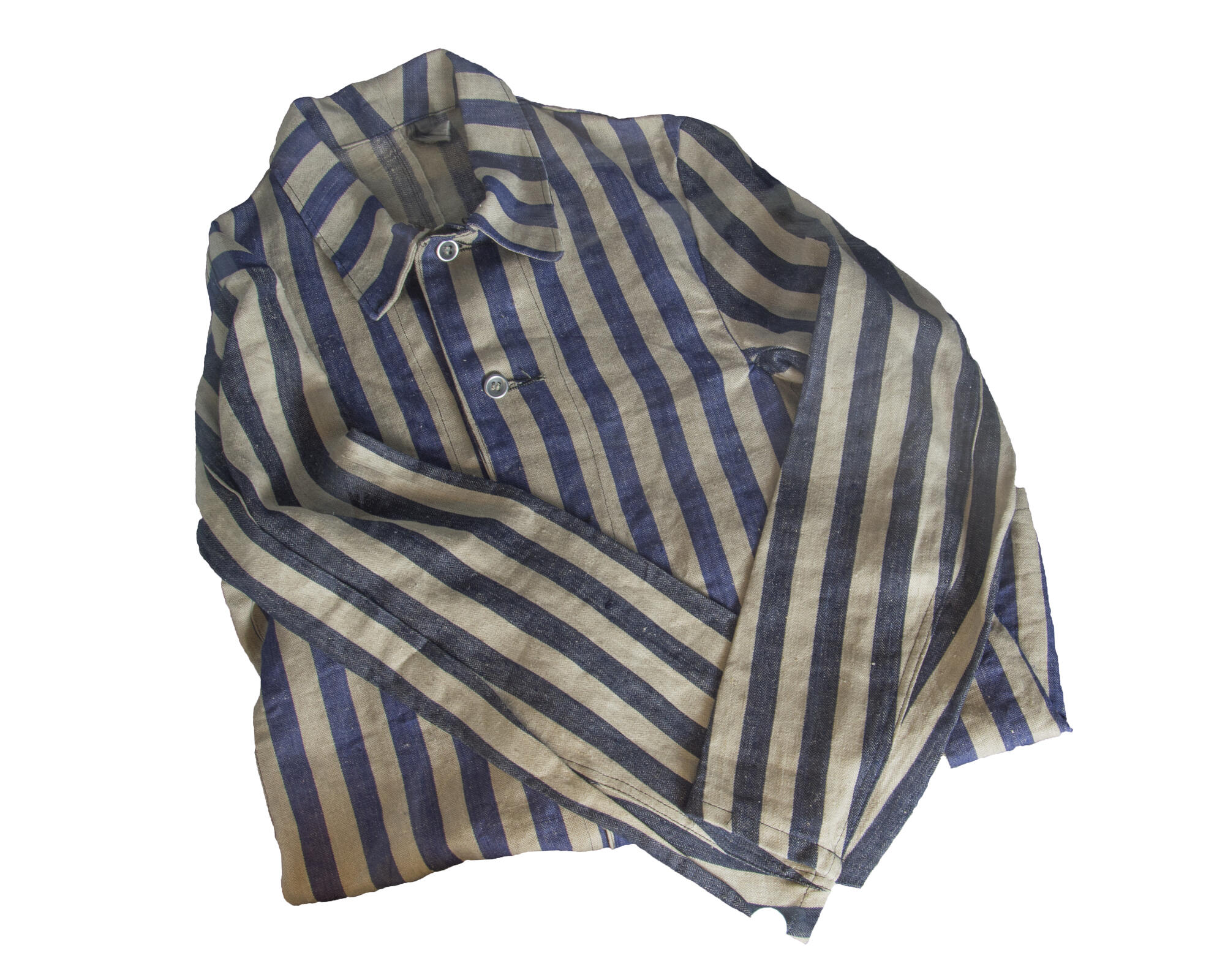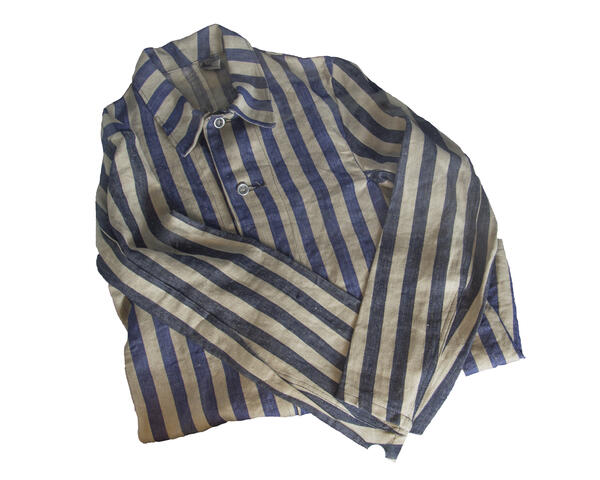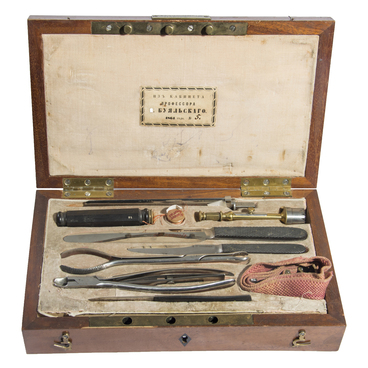The exhibition of the Military Medical Museum contains the clothes of a prisoner of a Nazi concentration camp — a striped uniform. It was made from off-grade materials, for example, viscose staple fiber or cotton fabric. The inmates wore wooden shoes, sometimes called clogs. Since 1943, clothing from the extermination camps was issued to prisoners in forced labor camps. It was marked with paint or bright patches.
All belongings of the camp prisoners were confiscated. As soon as another train with prisoners of war, criminals and civilians of the invaded territories arrived at the concentration camp, the camp administration took their luggage — clothes, food, tools and everything else. These personal belongings were sorted by a special team of prisoners, then the possessions were loaded into the cars and taken to the warehouses called ‘Canada’. The products were delivered to the ration depot. The empty platform was carefully examined for lost valuables and money.
After that, the prisoners were sorted: pregnant women, the elderly, children under 120 centimeters tall, and the sick were picked out. They were again searched by prisoners from the Sonderkommando, and their clothes, shoes, glasses, watches and other personal belongings were taken away. The women got their heads shaved before being sent to the gas chamber. Their hair was collected and dried, afterward it was used for stuffing mattresses, upholstered furniture, for making wigs and chignons.
In the gas chambers, gold dental crowns and dentures were torn out from the corpses to be melted down. The bodies were marked with the sign ‘examined by a dentist’ and taken on special stretchers to the cremation ovens.
Most pieces of clothes collected from the prisoners were sent to firms listed by the Ministry of Economy of the Third Reich. Further, their belongings were delivered to the Volksdeutsche Mittelstelle — one of the central departments that was engaged in Nazi propaganda among ethnic Germans living outside Germany aimed at resettling them to the territory of the Third Reich.
In the Sachsenhausen concentration camp, built by the Nazis 35 kilometers north of Berlin in the summer of 1936, there was a workshop specializing in the repair of watches, alarm clocks and fountain pens, which were delivered in bulk from other concentration camps. 150 skilled watchmakers from among the prisoners were engaged in this workshop. After the watches were repaired, the SS Main Administrative and Supply Directorate distributed them among the officers of the SS troops, the ranks of the naval and air forces of the Reich.
All belongings of the camp prisoners were confiscated. As soon as another train with prisoners of war, criminals and civilians of the invaded territories arrived at the concentration camp, the camp administration took their luggage — clothes, food, tools and everything else. These personal belongings were sorted by a special team of prisoners, then the possessions were loaded into the cars and taken to the warehouses called ‘Canada’. The products were delivered to the ration depot. The empty platform was carefully examined for lost valuables and money.
After that, the prisoners were sorted: pregnant women, the elderly, children under 120 centimeters tall, and the sick were picked out. They were again searched by prisoners from the Sonderkommando, and their clothes, shoes, glasses, watches and other personal belongings were taken away. The women got their heads shaved before being sent to the gas chamber. Their hair was collected and dried, afterward it was used for stuffing mattresses, upholstered furniture, for making wigs and chignons.
In the gas chambers, gold dental crowns and dentures were torn out from the corpses to be melted down. The bodies were marked with the sign ‘examined by a dentist’ and taken on special stretchers to the cremation ovens.
Most pieces of clothes collected from the prisoners were sent to firms listed by the Ministry of Economy of the Third Reich. Further, their belongings were delivered to the Volksdeutsche Mittelstelle — one of the central departments that was engaged in Nazi propaganda among ethnic Germans living outside Germany aimed at resettling them to the territory of the Third Reich.
In the Sachsenhausen concentration camp, built by the Nazis 35 kilometers north of Berlin in the summer of 1936, there was a workshop specializing in the repair of watches, alarm clocks and fountain pens, which were delivered in bulk from other concentration camps. 150 skilled watchmakers from among the prisoners were engaged in this workshop. After the watches were repaired, the SS Main Administrative and Supply Directorate distributed them among the officers of the SS troops, the ranks of the naval and air forces of the Reich.



